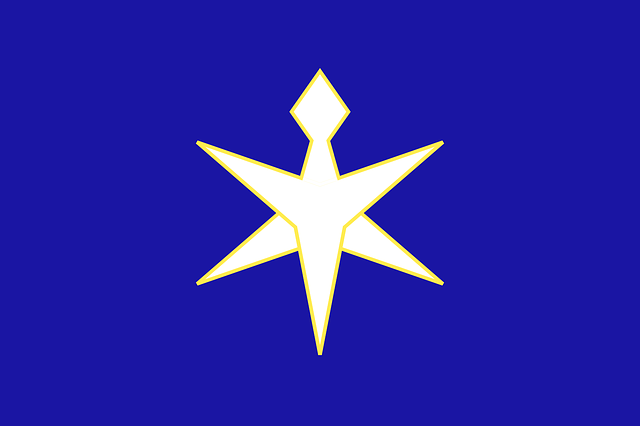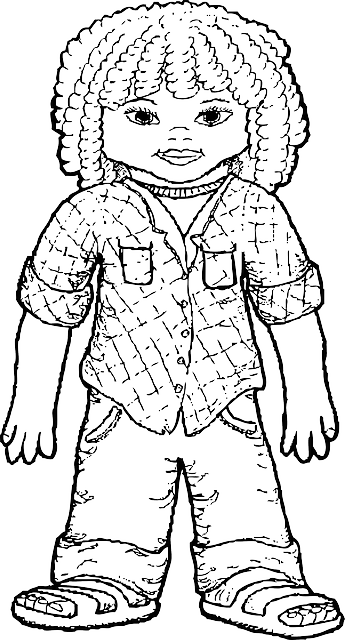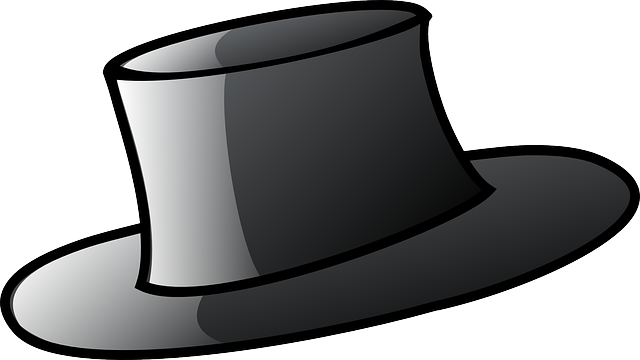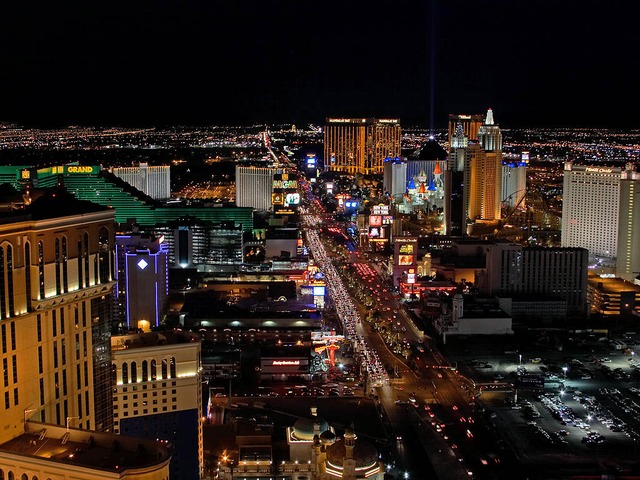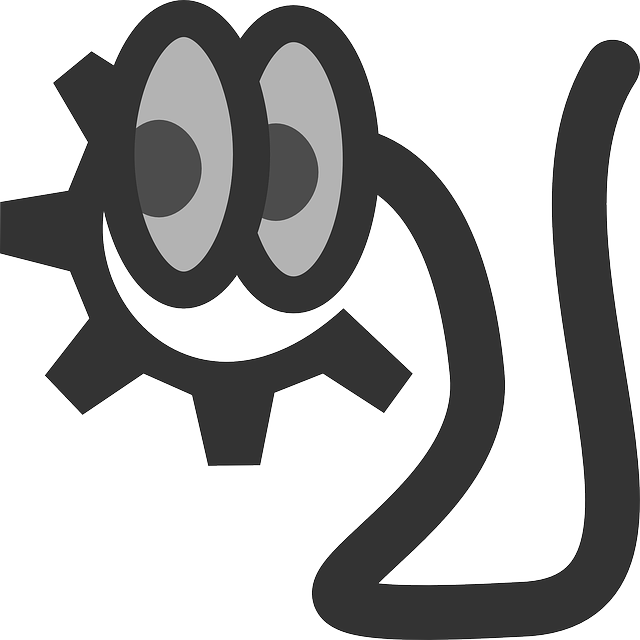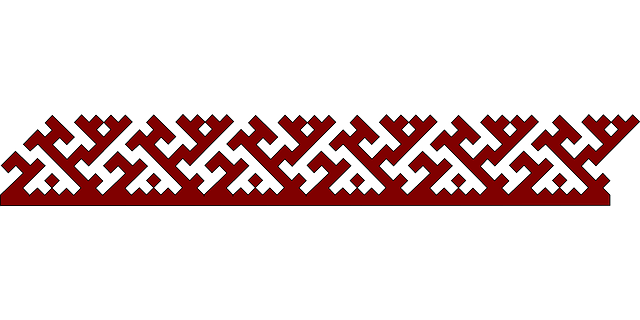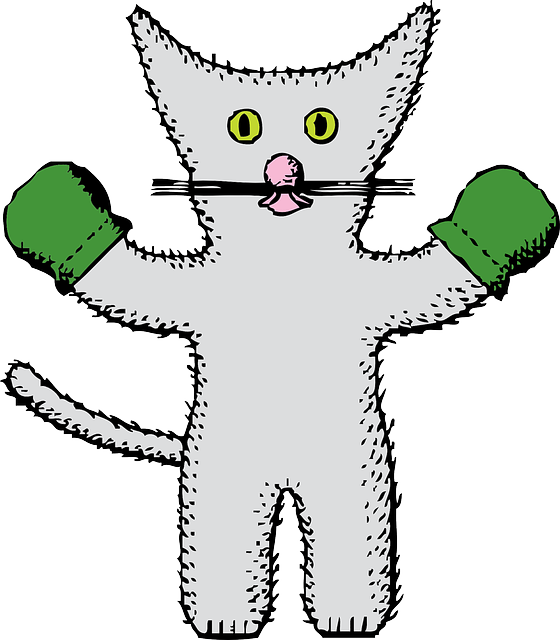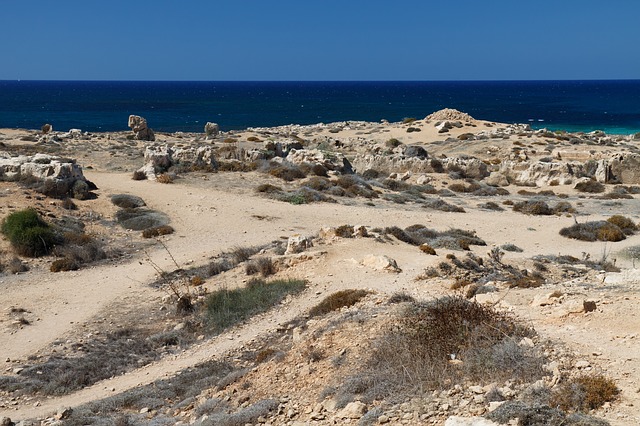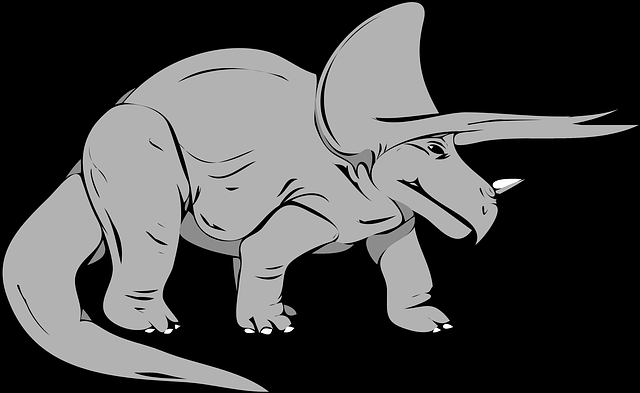قائمة المخترعين والمكتشفين الألمان
هذه هي قائمة المخترعين والمكتشفين الألمان. القائمة التالية تضم الأشخاص من ألماني أومن اروبا الناطقة بالألمانية، وأيضاً الأشخاص من تراث ألماني غالباً، في ترتيب أبجدي للقب العائلة.
| موجود: | أ | ب | ت | D | E | F | G | H | I | J | K | L | M | N | O | P | Q | R | S | T | U | V | W | X | Y | Z | |
|---|---|---|---|---|---|---|---|---|---|---|---|---|---|---|---|---|---|---|---|---|---|---|---|---|---|---|---|
| انظر أيضاً | الهامش | المراجع | وصلات خارجية | ||||||||||||||||||||||||
حرف ا
- إرنست كارل آبه: اخترع أول جهاز لقياس انكسار الضوء، وأجهزة أخرى عديدة.
- Franz Carl Achard: Developed a process to produce sugar from sugar beet. Built the first factory for the process in 1802.
- روبرت أدلر: قام بتحسين جهاز التحكم عن بعد في أجهزة التلفزة.
- كونراد أدناور: اخترع مقانق الصويا (1916؛ "Kölner Wurst") and, together with Jean and Josef Oebel, [coarse] wholemeal bread (1917; Kölner Brot).
- Wilhelm Albert: Invented the wire rope 1834.
- ألويس ألزهايمر (1864-1915) عالم نفس، اكتشف سقم ألزهايمر، وهوسقم تنكسي يصيب المخ عند المسنين.
- هرمان أنشوتس-كمپفه: اخترع البوصلة الجيروسكوپية في 1907.
- مانفريد فون آردن: باحث وفيزيائي ومبتكر عصامي التعليم، مخترع التلفاز وأشياء أخرى، وله 600 براءة اختراع في مجالات عديدة منها المجهر الإلكتروني والتقنية الطبية والتقنية النووية وفيزياء البلازما وتقنيات الراديووالتلفاز.
- ليوآرونز: مصباح الزئبق-البخار بالتشارك مع پيتر كوپر هيويت.
- ليوپولد أورباخ: Discovery of Plexus myentericus Auerbachi, or Auerbach's plexus.
- Max Abraham: Physicist. Worked as Max Planck's assistant for three years. Developed theories on electrons.
اُ O
- Hermann Oberth: Pioneer of rocket science and discoverer of the Oberth effect.
- August Oetker: Pharmacist. He was the first to sell baking powder in small packets to households instead of bakeries (as others before him) and thus made it the popular product we know today.
- Hans Joachim Pabst von Ohain: The modern jet engine in 1933, patented in 1936. فرانك ويتل had developed a similar concept independently in 1928/1929.
- Wilhelm Ostwald: Numerous discoveries and inventions in chemistry and other areas.
- Nikolaus August Otto: Inventor of the first internal-combustion engine to efficiently burn fuel directly in a piston chamber.
إ E
- پول إرليخ: Scientist in the fields of hematology, immunology, and chemotherapy, and Nobel laureate. Developed an effective treatment against syphilis.
- ألبرت أينشتاين: Father of Theoretical Physics, inventor and discoverer.
- لودڤيگ إلسبت: Developed new concepts for Diesel engines which drastically enhanced efficiency.
- إفاريستوكونرادوإنگلبرگ: المخترع في 1885 لماكينة لنزع شواشي الأرز والقهوة، Engelberg huller.
- فريدريش إنگلز: اخترع مع كارل ماركس وجهة النظر الاقتصادية والسياسية الاجتماعية الماركسية.
- هوگوإردمان: الكيميائي الذي اكتشف، مع المشرف على رسالته للدكتوراه ياكوب فولهارد، Volhard-Erdmann cyclization. في 1898 كان أول من صاغ المصطلح غاز نبيل (الاسم الأصلي كان Edelgas بالألمانية).
- ليوبولد أويرباخ: مكتشف ضفيرة أويرباخ.
إ I
- Otmar Issing: Economist who invented the "pepet pillar" decision algorithm now used by the ECB.
او U
- Dietrich "Diedrich" Uhlhorn: Engineer, mechanic and inventor, who invented the first mechanical tachometer (1817), between 1817 and 1830 inventor of the Presse Monétaire (level coin press known as Uhlhorn Press) which bears his name.
حرف ب
- كارل إرنست فون باير: اكتشف المبيض الثديي.
- رالف باير: مخترع أول شاشة ألعاب ڤيديومنزلية.
- أدولف فون باير: كيميائي. Synthesized indigo, discovered the phthalein dyes, and investigated polyacetylenes, oxonium salts, nitroso compounds (1869) and uric acid derivatives (1860 and onwards) including the discovery of barbituric acid (1864). Nobel laureate 1905.
- Albert Ballin: Father of modern cruise ship travel
- هاينرش باند: Developed a musical instrument and called it Bandoneon in 1846. It is used in most tango orchestras until today.
- اوسكار بارناك: The father of the first mass marketed 35mm camera and لايكا.
- Heinrich Anton de Bary: Father of Phytopathology, the science of plant diseases and modern Mycology. Coined the word symbiosis in 1879.
- Wilhelm Bauer: Inventor and engineer, who built several hand-powered submarines.
- Eugen Baumann: He was one of the first people to create polyvinyl chloride (PVC), and, together with Carl Schotten, he discovered the Schotten-Baumann reaction.
- Carl Baunscheidt: Inventor of the Lebenswecker ("life awakener") or "artificial leech".
- Hans Beck: Inventor of the toy Playmobil.
- Georg Bednorz: physicist, discovered high-temperature superconductivity in ceramics, shared the 1987 Nobel Prize in Physics.
- Martin Behaim: Inventor of the first globe of the world (Erdapfel) between 1491 and 1493.
- Alexander Behm: Inventor of echo sounding. The patent was granted in 1913.
- Fabian Gottlieb von Bellingshausen: Navigator and Exporer. Discovered the land mass of Antarctica on January 28, 1820.
- هانز بثه: Nuclear physicist and Nobel laureate in physics 1967. During World War II, he was head of the Theoretical Division at the secret Los Alamos laboratory which developed the first atomic bombs.
- إميل ڤون برنگ: Discovered the diphtheria antitoxin. It was the world's first cure for a disease (1891). He was awarded history's first Nobel Prize in Physiology of Medicine in 1901.
- Melitta Bentz: Inventor of the coffee filter, 1908.
- كارل بنز: Father and inventor of the gasoline-powered automobile, 1885, and pioneering founder of automobile manufacturing.
- Albrecht Berblinger: Inventor of the spring prosthesis and hang-glider (1811).
- إميل برلينر: He is best known for developing the microphone and disc record gramophone.
- Gerd Binnig: Physicist. Design of the scanning tunneling microscope (STM) with Heinrich Rohrer. Nobel laureate 1986.
- Max Bockmühl: He developed together with German Gustav Ehrhart Methadone in 1937 in Germany, working for I.G. Farbenindustrie AG at the Farbwerke Hoechst
- Johann Elert Bode: Discovered the Titus-Bode Law
- Ludwig Bölkow: Aeronautical pioneer. Was instrumental in the development of the Me 262, developed a new rotorhead concept for helicopters.
- ماكس بورن: Physicist and mathematician. Groundbreaking work in quantum mechanics. Nobel laureate 1954 with Walther Bothe. His Ph.D. student Delbrück, and six of his assistants (Fermi, Heisenberg, Goeppert-Mayer, Herzberg, Pauli, Wigner) went on to win Nobel Prizes. His Ph.D. student J. Robert Oppenheimer led the project to develop the atomic bomb.
- Manfred Börner: Physicist. Developed the first working fiber-optical data transmission system in 1965. Received a patent for an "electro-optical transmission system utilizing lasers".
- كارل بوش: Chemist and Nobel laureate, discovered the processes of industrial high pressure chemistry.
- روبرت بوش: He invented, engineered and launched various innovations for the motor vehicle.
- Walther Bothe: Nuclear physicist, who shared the Nobel Prize in Physics in 1954 with Max Born.
- Johann Friedrich Böttger: He was generally acknowledged as the inventor of European porcelain although more recent sources ascribe this to Ehrenfried Walther von Tschirnhaus. Böttger is still credited with developing the manufacture of porcelain in Europe.
- Karlheinz Brandenburg: Inventor and audio engineer; father of audio compression format MPEG Audio Layer 3, more commonly known as MP3.
- كارل فرديناند براون: Inventor of the CRT oscilloscope in 1897
- ڤرنر فون براون: The preeminent rocket engineer of the 20th century. Developed the V-2 rocket for Germany. Built Saturn V rocket in USA which put man on the moon.
- Walter Bruch: PAL, colour encoding system for analogue television
- روبرت ڤيلهلم بونزن: Chemist who developed the Bunsen burner, and with Gustav Kirchhoff he discovered caesium (1860) and rubidium (1861).
- Wilhelm Busch: Caricaturist, painter and poet; father of comics.
- Christian Friedrich Ludwig Buschmann: Pioneer and promoter of the harmonica.
- Adolf Busemann: Discovered the effect of swept wing for modern aircraft in 1935.
- أدولف بوتنانت: Discovered primary female sex hormones. Shared the Nobel Prize in Chemistry with Leopold Ruzicka in 1939.
پ
- ڤولفگانگ پاول: Physicist. Co-developed the non-magnetic quadrupole mass filter which laid the foundation for what we now call an ion trap. Shared the Nobel Prize in 1989.
- Hans von Pechmann: Chemist, renowned for his discovery of diazomethane in 1894. Pechmann condensation and Pechmann pyrazole synthesis.
- Fritz Pfleumer: Inventor of magnetic tape for recording sound. He builts the world's first practical tape recorder, called Magnetophon K1.
- ماكس پلانك: Physicist, Scientist. He is considered to be the founder of the quantum theory, and one of the most important physicists of the twentieth century.
- Robert Wichard Pohl: In 1938, together with Rudolf Hilsch, built first functioning solid-state amplifier using salt as the semiconductor.
- Ludwig Prandtl: First to explain the boundary layer and its importance for drag and streamlining in aircraft in 1904. He established and headed the Aerodynamische Versuchsanstalt in Göttingen, now Max Planck Institute for Dynamics and Self-Organization. During his tenure the first wind tunnel in Germany was built here, thereby establishing a specific design for wind tunnels (Göttingen type).
حرف ت
- إرنفريد ڤالتر فون تشيرنهاوز: يعتبر مخترع الپورسلين الأوروپي.
- أوسكار تروپلوڤتس: اخترع الشريط اللاصق، Leukoplast.
حرف ث
حرف ج
گ
- Hermann Ganswindt: Inventor and spaceflight scientist, whose inventions (such as the dirigible, the helicopter, and the internal combustion engine) are thought to have been ahead of his time.
- Johann Carl Friedrich Gauss: German mathematician and physical scientist who contributed significantly to many fields, including number theory, statistics, analysis, differential geometry, geodesy, geophysics, electrostatics, astronomy and optics. Sometimes referred to as "the Prince of Mathematicians".
- Hans Geiger: Inventor of the Geiger-Müller counter in 1928. It detects the emission of nuclear radiation through the ionization produced in a low-pressure gas in a Geiger–Müller tube. Further improved by Walther Müller.
- Heinrich Geißler: Inventor of the Geissler tube.
- Reinhard Genzel: Astrophysicist, he and his group were the first to track the motions of stars at the centre of the Milky Way and show that they were orbiting a very massive object, probably a supermassive black hole.
- Walter Gerlach: Physicist who co-discovered spin quantization in a magnetic field, the Stern-Gerlach effect.
- Edmund Germer: Inventor of the neon lamp (Neonlampe).
- Max Giese: Inventor of the first Concrete pump in 1928.
- Heinrich Göbel: Inventor of Hemmer for Sewing Machines, 1865, Vacuum Pump (Improvement of the Geissler-System of vacuum pumps, 1881 and Electric Incandescent Lamp (sockets to connect the filament of carbon and the conducting wires), 1882
- Kurt Gödel: Important discoveries in math and logic, such as the incompleteness theorems
- Maria Goeppert-Mayer: Physicist. Nobel laureate in Physics 1963 for proposing the nuclear shell model of the atomic nucleus together with J. Hans D. Jensen. The unit for the two-photon absorption cross section is named the Goeppert-Mayer (GM) unit.
- Peter Carl Goldmark: Engineer who was instrumental in developing the long-playing (LP) microgroove 33-1/3 rpm vinyl phonograph disc.
- Heinrich Greinacher: German-Swiss physicist. He is regarded as an original experimenter and is the developer of the magnetron and the Greinacher multiplier; Cockcroft-Walton-Generator in 1914.
- Brothers Grimm: Academic pioneers of philology, linguistics, and storytelling. Worked together on the most comprehensive dictionary of the German language Deutsches Wörterbuch. Jacob Grimm: Philologist and linguist. Described first what is know known as Grimm's law, the first scientific research into sound change in 1822.
- Helmut Grötrupp: smart card (together with Jürgen Dethloff)
- Walter Gropius: Pioneer of modern architecture. Founder of the Bauhaus. First modern industrial building designed in 1910.
- Peter Grünberg: Physicist. Discovered giant magnetoresistance with Albert Fert. The discovery is used in gigabyte hard disk drives for computers. Nobel laureate 2007.
- Heinz Guderian: The father of modern mechanized warfare, inventor of the Blitzkrieg strategy.
- Otto von Guericke: Groundbreaking research into air pressure. Invented the vacuum pump in 1650.
- Beno Gutenberg: Together with American Charles Francis Richter he invented Richter magnitude scale.
- Johannes Gutenberg: Inventor of the technology of printing with movable type in 1439. The first book so printed was the Gutenberg Bible, one of the most beautifully executed printed books ever produced.
حرف ح
حرف خ
حرف د
- گوتليب دايملر,
- أدولف داسلر,
- رودولف داسلر,
- ماكس دلبروك,
- رودولف ديزل,
- كريستيان دوپلر,
- كارل درايس,
- پيتر دراكر.
حرف ذ
حرف ر
- Adolf Rambold: Inventor of modern tea bag.
- Johann Philipp Reis: Inventor of the first phone transmitter in 1861, he also invented the term Telephone.
- Ralf Reski: Moss bioreactor (1998).
- Paul Julius Freiherr von Reuter: Communications pioneer.
- Fritz Reiche: Was a student of Max Planck and a colleague of Albert Einstein, who was active in, and made important contributions to the early development of quantum mechanics including co-authoring the Thomas-Reiche-Kuhn sum rule.
- Bernhard Riemann: Mathematician, who made lasting contributions to analysis, number theory, and differential geometry.
- Wilhelm Conrad Röntgen: Physicist and discoverer of x-rays/Röntgen rays (8 November 1895), this earned him the first Nobel Prize in Physics in 1901.
- Arthur Rudolph: Rocket engineer who, together with Wernher von Braun, played a key role in the development of the V-2 rocket.
- Ernst Ruska: Physicist, developed the first electron microscope in 1933. Nobel laureate 1986.
حرف ز
- Hermann Zapf: Pioneer of computer typography and creator of many well-known typefaces.
- Carl Zeiss: Pioneered glass casting and allied procedures and processes for high quality optics.
- Ferdinand Graf von Zeppelin (1838–1917): Inventor of the airship named after him. Start of the airship LZ1 in 1900.
- Karl Zimmer: Discovered the effects of ionizing radiation on DNA in 1935.
- Konrad Zuse: Inventor of the first functional program-controlled Turing-complete computer in 1941, and the first high-level programming language Plankalkül in 1942.
حرف س
- Alois Senefelder: He invented the printing technique of lithography in 1796.
- Friedrich Sertürner: First to isolate morphine from the opium poppy in 1803/1804, discovering morphine.
- Philipp Franz von Siebold: Physician and naturalist, detailed description and collection of the Japanese flora and fauna. Introduced Western medicine to Japan and opened a medical school.
- Ernst Werner von Siemens: Dynamo, pointer telegraph that used a needle to point to the right letter, first electric elevator, trolleybus.
- Friedrich Soennecken: Invented Hole punch and ring binder.
- Arnold Sommerfeld: Theoretical physicist who pioneered developments in atomic and quantum physics.
- Eduard Suess: Discoveries in geology.
حرف ش
- Carl Wilhelm Scheele: Oxygen (although Joseph Priestley published his findings first), identification of molybdenum, tungsten, barium, hydrogen and chlorine
- Arthur Scherbius: Developed the mechanical cipher machine Enigma. Patent granted in 1918.
- Paul Schlack: Invented Nylon 6.
- Friedrich Albert Moritz Schlick: Was a German philosopher, physicist and the founding father of logical positivism and the Vienna Circle.
- Heinrich Schliemann: Father of archaeology, among other things he discovered Homeric Troy.
- Hugo Schmeisser: Developed the first modern assault rifle StG 44 in 1942.
- Bernhard Schmidt: Discovered major improvements to the telescope.
- Paul Schmidt (inventor): Developed since 1928 his idea of a new drive, the "pulsating incineration", also used in the V-1 flying bomb (engine was called "Argus-Schmidtrohr"); pulsejet was a development by Schmidt.
- Christian Friedrich Schönbein: Professor Schönbein is credited with four scientific advances: Ozone, Gun cotton, Collodion and Fuel cell
- Johann Lukas Schönlein: Professor of medicine, he discovered among other things the parasitic cause of ringworm or favus (Achorion Schönleinii).
- Otto Schoetensack: Named the Homo heidelbergensis.
- Otto Schott: Inventor of borosilicate glass. Donated his shares in the company Carl Zeiss to form Carl-Zeiss-Stiftung, still in existence today.
- Walter H. Schottky: Played a major early role in developing the theory of electron and ion emission phenomena, invented the screen-grid vacuum tube and the pentode.
- Marx Schwab: Silversmith, invented coining with the screw press around 1550.
- Theodor Schwann: Discovery of properties of cells in animals.
- Jack Steinberger: German-American-Swiss physicist, co-discovered the muon neutrino, shared 1988 Nobel Prize in Physics.
- Georg Wilhelm Steller: Chief naturalist on Vitus Bering's expedition during which Alaska was discovered (1741) and pioneer of Alaskan Natural History. Steller's sea cow (now extinct) was named after him.
- Otto Stern: Nobel laureate; contributed to the discovery of spin quantization in the Stern-Gerlach experiment with Walther Gerlach in 1922.
- Heinrich Stölzel: Developed the valve for brass instruments which is used today in 1818. Friedrich Blühmel had made a similar development independently at the same time.
- Horst Ludwig Störmer: German-American physicist. Shared the Nobel Prize in 1998 for the discovery of a new form of quantum fluid with fractionally charged excitations.
- Levi Strauss: The German American father of blue jeans.
حرف ص
حرف ض
حرف ظ
حرف ع
حرف غ
حرف ف
- Daniel Gabriel Fahrenheit: Physicist and engineer who invented the alcohol thermometer (1709), the mercury thermometer (1714), and a temperature scale now named after him.
- Gerd Faltings: mathematician known for his work in arithmetic algebraic geometry, Fields Medal in 1986 for proving the Mordell conjecture.
- Wilhelm Emil Fein: Invented the electrically-driven hand drill in 1895.
- Artur Fischer: Invented the (split) wallplug made of plastic in 1958.
- Hermann Emil Fischer: Discoveries in chemistry.
- Franz Fischer and Hans Tropsch: Invented a process in 1925 to turn coal into synthesis gas, and still further into liquid hydrocarbons. The process is a key component in modern gas to liquids processes.
- Wilhelm Rudolph Fittig: He discovered the pinacol coupling reaction, mesitylene, diacetyl and biphenyl.
- Irmgard Flügge-Lotz: She worked on what she called "discontinuous automatic control," which laid the foundation for automatic on-off aircraft control systems in jets.
- Werner Forssmann: Performed the first human cardiac catheterisation. Shared the Nobel Price for Medicine 1956
- Joseph von Fraunhofer: Discovery of the dark absorption lines known as Fraunhofer lines in the Sun's spectrum, and for making excellent optical glass and achromatic telescope objectives.
- Gottlob Frege: He is generally considered to be the father of analytic philosophy. Had influence on Carnap, Russell, and Wittgenstein
- Otto Frenzl: Aeronautical pioneer, developed the area rule in 1943, a design technique for airfoils used to reduce an aircraft's drag at transonic and supersonic speeds. Later it was independently developed again by Richard T. Whitcomb in 1952.
- Sigmund Freud: Neurologist who became known as the founding father of psychoanalysis.
- Nikolaus Friedreich: Discovery of Friedreich-Auerbach disease (together with Leopold Auerbach) among other things.
- Friedrich Fröbel: Pedagogue, who laid the foundation for modern education. He created the concept of the kindergarten.
- Klaus Fuchs: Theoretical physicist
- Johann Carl Fuhlrott: Had the insight to recognize the Neanderthal bones for what they were: the remains of a previously unknown type of humans. He (together with Schaafhausen) is considered to be the father of paleoanthropology.
ف V
- Abraham Vater: Professor of anatomy; Ampulla of Vater.
- Richard Vetter: Developed the most fuel efficient condensing boiler for heating systems in 1980. Used in many houses in Europe.
- Rudolf Virchow: "Father of modern pathology"; numerous discoveries in the area of medicine.
- Hans Vogt: Invented sound-on-film (idea 1905) together with Jo Engl and Joseph Massolle, first sound-on-film for the public on 17 September 1922 in Filmtheater Alhambra, Berlin, Germany.
- Woldemar Voigt (often: Waldemar Voigt): Physicist, who taught at the Georg August University of Göttingen. He worked on crystal physics, thermodynamics and electro-optics. He discovered the Voigt effect in 1898.
- Waldemar Voigt (aerospace engineer): Chief designer at Messerschmitt's Oberammergau offices and pioneer of the Me 163 and Me 264, project leader of the development of Me P. 1101, Me P. 1106, Me P. 1110, Me P. 1111, Me P. 1112 and Me P. 1116.
- Jacob Volhard: Chemist who discovered, together with his student Hugo Erdmann, the Volhard–Erdmann cyclization.
ڤ
- Martin Waldseemüller: Cartographer, used the name "America" on his map Universalis Cosmographia in honour of the Florentine explorer Amerigo Vespucci. The map was drawn at St. Die in 1507 and it was the first time "America" was used on a map.
- Otto Wallach: Chemist who researched, amongst others, alicyclic compounds. Nobel Prize in Chemistry 1910.
- Hellmuth Walter: Engineer who pioneered research into rocket engines and gas turbines.
- Felix Wankel: Inventor of the Rotary Motor.
- Max Weber: Discovered the mass effects of capitalism and modernity.
- Wilhelm Eduard Weber: Inventor of the first electromagnetic telegraph together with Carl Friedrich Gauss.
- Alfred Wegener: He is most notable for proposing continental drift in 1912
- Gustav Weißkopf: Aviation pioneer - Worlds First Motorized Flight: August 14, 1901.
- Clemens Alexander Winkler: Chemist who discovered the element germanium in 1886.
- August Wöhler: Investigated fatigue phenomena in the behavior of materials
- Friedrich Wöhler: The first to synthesize urea. Wöhler is regarded as a pioneer in organic chemistry.
حرف ق
حرف ك
- Donald J. Kessler: Astrophysicist, known for developing the Kessler syndrome.
- Hermann Kemper: Invented the magnetic levitation train. Patent granted in 1934.
- Johannes Kepler: Discovered the laws of planetary motion.
- Wolfgang Ketterle: German-American physicist who developed an "atom laser", amongst other breakthroughs. Nobel laureate 2001.
- Erhard Kietz: Pioneer discoverer of video technology.
- Gustav Kirchhoff: Discovery of the principles upon which spectroscopy is founded.
- Martin Heinrich Klaproth: Discovered the element Uranium.
- Klaus von Klitzing: Physicist, known for discovery of the integer quantum Hall effect, 1985 Nobel Prize in Physics.
- Ludwig Knorr: Chemist, who together with Carl Paal, discovered the Paal-Knorr synthesis, and the Knorr quinoline synthesis and Knorr pyrrole synthesis.
- Robert Koch: Physician, discoverer, inventor and Nobel Prize winner. He became famous for isolating Bacillus anthracis (1877), the Tuberculosis bacillus (1882) and the Vibrio cholera (1883) and for his development of Koch's postulates.
- Arthur Korn: Inventor involved in development of the fax machine, specifically the transmission of photographs or telephotography, known as the Bildtelegraph.
- Max Kramer: Aircraft engineer. Developed the first operational guided bomb in 1942/43. This first smart bomb was radio controlled and joy-stick operated.
- Julius H. Kroehl: Inventor and engineer, who built the first functioning submarine in the world.
- Herbert Kroemer: Physicist, shared the Nobel Prize in Physics 2000 for developing semiconductor heterostructures used in high-speed- and opto-electronics.
- Werner Krüger: Developed the Krueger flap, a lift enhancement device in modern aircraft wings in 1943.
- Alfred Krupp: Pioneer in metal casting and metal working process and procedures.
- Adam Johann von Krusenstern: Navigator and explorer, led the first Russian expedition to circumnavigate the earth.
- Dietrich Küchemann: Aeronautical pioneer, developed wings for supersonic speed, such as delta wings as used in the Concorde.
- جورج كانتور, عالم رياضيات، مخترع نظرية المجموعات (في سبعينات القرن التاسع عشر).
- كارل فون كلاوزفيتس,
- يوهانس كيبلر,
- غوستاف روبرت كيرشهوف,
- مارتن كلابروث,
- روبرت كوخ
حرف ل
- Eugen Langen: Entrepreneur, engineer and inventor, involved in the development of the petrol engine and the Wuppertal monorail.
- ماكس فون لاوه: Discoveries regarding the diffraction of X-rays in crystals.
- Ernst Lecher: He is remembered for developing an apparatus— "Lecher lines"—to measure the wavelength and frequency of electromagnetic waves.
- Gottfried Wilhelm Leibniz: Philosopher known for discovering the mathematical field of calculus and coherently laying down its basic operations in 1684.
- Georg Christoph Lichtenberg: German scientist credited with the development of the electrophorus.
- يوستوس فون ليبگ: German chemist who made contributions to agricultural and biological chemistry.
- Otto Lilienthal: Father of Aviation and first successful aviator. Main discovery was the properties and shape of the wing.
- Carl von Linde: Engineer who, among other things, developed refrigeration and gas separation technologies.
- Walter Linderer: Father of the airbag.
- Alexander Lippisch: Pioneer of aerodynamics, his most famous design is the Messerschmitt Me 163.
- گوتفريد لايپنتس,
- اوتوليلينتال.
حرف م
- Ernst Mach: Discovered many effects of high speed projectiles; the Mach number is dedicated to his memory.
- Georg Hans Madelung: Academic and aeronautical engineer; a participant in the development of the Junkers F.13.
- Karl Marx: Political economist and philosopher, who defined the political/economical background of capitalism and discovered the mechanics of Marxism. His ideas still influence the world we now live in.
- Wilhelm Maybach: Together with Gottlieb Daimler the first gasoline-powered motorcycle, power-engined boat and later, 1902, the Mercedes car model.
- Ottomar von Mayenburg: Inventor of "Chlorodont", the first commercial brand of toothpaste.
- Lise Meitner: Nuclear physicist, who, together with Otto Frisch, provided a theoretical account of nuclear fission.
- Julius Lothar Meyer: With Mendeleev he developed the periodic classification of the elements in order of their atomic weight.
- Christian Erich Hermann von Meyer: He discovered the Triassic predator Teratosaurus, the earliest bird Archaeopteryx lithographica (1861), the pterosaur Rhamphorhynchus, and the prosauropod dinosaur Plateosaurus
- Gregor Mendel: Discoveries in genetics. Mendel demonstrated that the inheritance of certain traits in pea plants follows particular patterns, now referred to as the laws of Mendelian inheritance. First published in 1865.
- Ottmar Mergenthaler: Inventor who has been called a second Gutenberg because of his invention of the Linotype machine.
- Rudolf Mössbauer: physicist, discovered Mössbauer effect, shared Nobel Prize in Physics 1961.
- Johannes Peter Müller: Discoveries in physiology.
حرف ن
- توماس ناست: The German American "Father of the American Cartoon".
- ڤالتر نرنست: Inventor of the Nernst lamp and Nobel laureate 1920 in Chemistry.
- Karl Nessler: Inventor of the permanent wave.
- Emmy Noether: Mathematician. Groundbreaking contributions to abstract algebra and theoretical physics (Noether's theorem). Considered by many as the most influential woman in the history of mathematics.
- كارل نيسلر.
حرف ه
- Fritz Haber: German chemist and Nobel laureate who pioneered synthetic ammonia and chemical warfare.
- Theodor W. Hänsch: Physicist, developed laser-based precision spectroscopy further to determine optical frequency extremely accurately. Nobel laureate in 2005.
- Otto Hahn: German chemist and Nobel laureate who pioneered the fields of radioactivity and radiochemistry. Considered to be "the father of nuclear chemistry" and the "founder of the atomic age". Discovered many isotopes, Protactinium and nuclear fission.
- Harald zur Hausen: Virologist, discovered the role of papilloma viruses in the development of cervical cancer. His research made the development of a vaccine against papilloma possible, which will drastically reduce cervical cancer in future. Nobel laureate 2008.
- Henry J. Heinz: Tomato ketchup and fifty six other things.
- Werner Heisenberg: Theoretical physicist who made fundamental contributions to quantum mechanics. Discovered a particle's position and velocity cannot be known at the same time. Discovered atomic nuclei are made of protons and neutrons.
- Rudolf Hell: Inventor of the first fax machine (Hellschreiber).
- Richard Hellmann: Hellmann's (Blue Ribbon) Mayonnaise, 1905.
- Hermann von Helmholtz: Discovered the principle of conservation of energy.
- Peter Henlein: Inventor of the portable watch.
- Friedrich Wilhelm Herschel (William Herschel): Discovered the planet Uranus and infrared radiation among other things.
- Heinrich Hertz: Physicist, Discoverer of electromagnetic/radio waves.
- Otto Herzog: First use of the Carabiner in mountain climbing which substantially enhanced security for mountaineers.
- Victor Francis Hess: Discovered Cosmic rays. Also won the Nobel Prize.
- David Hilbert: Influential mathematician who discovered and developed a broad range of fundamental ideas in math.
- Albert Hofmann: German-Swiss; Discovered the chemical properties of chitin and lysergic acid diethylamide.
- Wilhelm Hofmeister: Discovery the Alternation of generations
- Felix Hoffmann: Isolated acetylsalicylic acid, a painkiller marketed under the name Aspirin (Bayer), 1897. In some English speaking countries marketed under the name disprin.
- Herman Hollerith: a German American statistician who developed a mechanical tabulator based on punched cards
- Gottlob Honold: Inventor of the spark plug and the modern internal combustion engine, as well as headlights.
- الأخوان هورتن: صمما أكثر الطائرات المتقدمة في الأربعينيات، وتضم أول طائرة نفاثة، هورتن هو229.
- Christian Hülsmeyer: German inventor of the Telemobilskop, a radio-based detector of remote objects; a 1904 precursor of radar.
- Alexander von Humboldt: Naturalist and explorer. His quantitative work on botanical geography was foundational to the field of biogeography.
- Wilhelm von Humboldt: Originator of the linguistic relativity hypothesis.
حرف و
حرف ي
- J. Hans D. Jensen: nuclear physicist, proposed the nuclear shell model, shared 1963 Nobel Prize in Physics.
- هوگويونكرز: Pioneer of all-metal aircraft construction with the Junkers J 1 (1915–16).
انظر أيضا
- قائمة الاختراعات والاكتشافات الألمانية
- قائمة الأمريكان من أصل ألماني
الهامش
- ^ http://worldwide.espacenet.com/publicationDetails/biblio?locale=de_EP&CC=GB&NR=131402 Improvements in the Composition and Manufacture of Sausage Meat and the like; Patent
- ^ http://depatisnet.dpma.de/DepatisNet/depatisnet?window=1&space=menu&content=treffer&action=pdf&docid=AT000000074310B&Cl=2&Bi=1&Ab=&De=2&Dr=&Pts=&Pa=&We=&Sr=&Eam=&Cor=&Aa=&so=desc&sf=vn&firstdoc=0&NrFaxPages=2&pdfpage=2 Patent; page 2
- ^ Renouf, Edward (1901-02-15). "Noble gases". Science. 13 (320): 268–270. Bibcode:1901Sci....13..268R. doi:10.1126/science.13.320.268.
- ^ John M. Barry, The Great Influenza; The Epic Story of the Deadliest Plague in History (New York: Penguin Books, 2005) 70.
- ^ Goebel's patent 47.632 „Hemmer for Sewing Machines"
- ^ Goebel's patent 252658 „Vacuum Pump"
- ^ Goebel's patent 266358 „Electric Incandescent Lamp"
- ^ Christian Friedrich Schönbein (18 October 1799 - 29 August 1868)
- ^ History of coin pressing
-
^ Boyne, Walter J. (1980). Messerschmitt Me 262 : arrow to the future. Washington D.C.: Smithsonian Institution Press. p. 117. ISBN . Unknown parameter
|coauthors=ignored (|author=suggested) (help)
وصلات خارجية
- "Made in Germany"
- German Inventions - Discoveries
- A Sampling of German Inventors and Inventions
- German inventors—"Made in Germany"
خطأ استشهاد: وسوم <ref> موجودة لمجموعة اسمها "lower-alpha"، ولكن لم يتم العثور على وسم <references group="lower-alpha"/> أوهناك وسم </ref> ناقص


